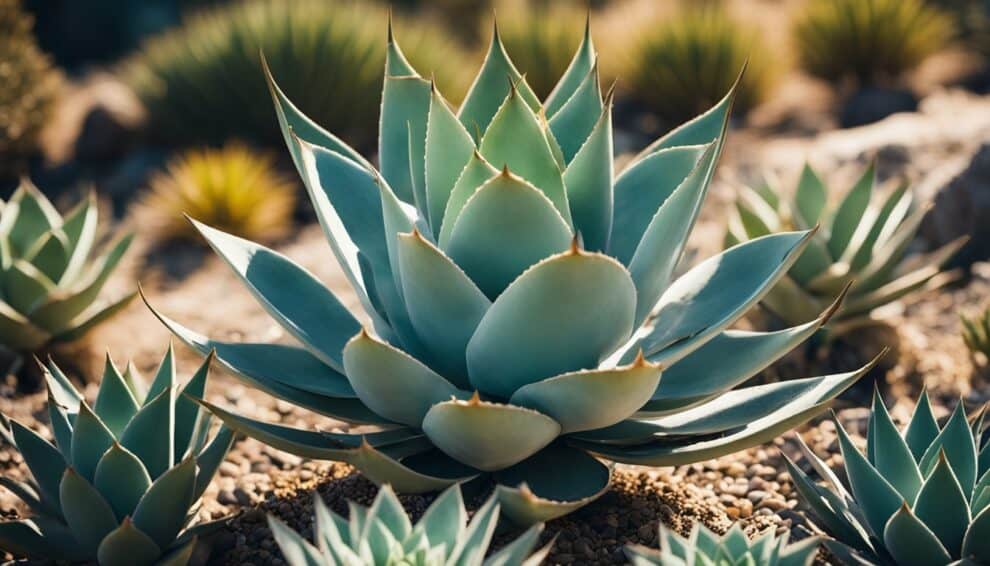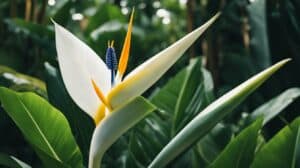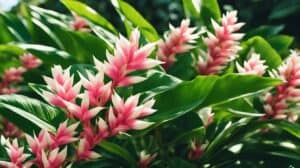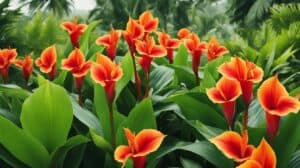Agave Victoriae-Reginae, commonly known as the Royal Agave, is a stunning succulent that is native to Mexico.
It is a slow-growing plant that can take up to a decade to mature, but its unique beauty and resilience make it a popular choice for gardeners and collectors alike.
This article will delve into the art of cultivating the Royal Agave, exploring its origins, growth habits, and care requirements.

The Royal Agave is named after Queen Victoria of England, who was a great lover of plants and gardens.
Its distinctive appearance is characterized by its symmetrical rosette of thick, fleshy leaves that are arranged in a spiral pattern.
The leaves are a striking shade of green, with white markings along the edges and a sharp spine at the tip.
When the plant reaches maturity, it produces a tall, branching flower stalk that can reach up to 20 feet in height and is adorned with clusters of yellow flowers.
Understanding Agave Victoriae-Reginae
Species Overview
Agave Victoriae-Reginae, commonly known as the Royal Agave, is a small succulent plant that belongs to the Agavaceae family.
This species is native to the Chihuahuan Desert, which spans across parts of Mexico and the southwestern United States.
The Royal Agave is characterized by its rosette of fleshy, pointed leaves that grow in a spiral pattern.
These leaves are dark green in color and have white markings along their edges, which give the plant a unique and striking appearance.
The Royal Agave is a slow-growing plant that can take several years to reach maturity.
When it does, it produces a tall flower spike that can reach up to 12 feet in height.
This spike is covered in small, yellowish-green flowers that bloom in the summer months.
After the flowers have bloomed, the plant will die, but it will leave behind several offsets or “pups” that can be used to propagate new plants.
Historical Significance
The Royal Agave has been valued for its ornamental qualities for centuries.
In ancient times, the plant was used by indigenous people for its medicinal properties.
They believed that the plant had healing powers and used it to treat a variety of ailments, including skin conditions and digestive problems.
Today, the Royal Agave is widely cultivated as an ornamental plant in gardens and landscapes around the world.
Its unique appearance and low maintenance requirements make it a popular choice for both novice and experienced gardeners.
Additionally, the plant is sometimes used in xeriscaping, a landscaping technique that uses drought-resistant plants to conserve water.
In conclusion, the Royal Agave is a fascinating plant species that has both historical and ornamental significance.
Its distinctive appearance and low maintenance requirements make it a great addition to any garden or landscape.
Cultivation Techniques

Ideal Soil Conditions
Agave Victoriae-Reginae, commonly known as the Royal Agave, thrives in well-draining soil that is slightly acidic to neutral.
The ideal soil pH for growing this plant ranges from 6.0 to 7.5. A mixture of sand, perlite, and peat moss can be used to create a well-draining soil.
It is important to avoid overwatering as this can lead to root rot.
Watering Requirements
The Royal Agave is drought-tolerant and can survive long periods without water.
However, it is important to water the plant regularly during the growing season to promote healthy growth.
The frequency of watering will depend on the climate and soil conditions.
In general, it is recommended to water the plant every two weeks during the growing season and reduce watering in the winter months.
Sunlight and Temperature
The Royal Agave requires full sun to thrive. It can tolerate partial shade but will not grow as well.
The plant can also tolerate a wide range of temperatures, from freezing to hot and dry conditions.
However, it is important to protect the plant from frost during the winter months.
Overall, the Royal Agave is a hardy plant that is easy to grow with the right conditions.
By providing well-draining soil, regular watering, and full sun, the plant can thrive and produce stunning foliage.
Propagation Methods

Agave Victoriae-Reginae, also known as the Royal Agave, is a slow-growing succulent that can be propagated through seed or offsets division.
Here are the two most common propagation methods:
Seed Propagation
Seed propagation is a simple method that requires patience. The seeds of Agave Victoriae-Reginae are small and black.
To propagate the plant, the seeds should be sown in a well-draining soil mix and covered with a thin layer of sand.
The seeds should be kept moist but not waterlogged. Germination can take anywhere from a few weeks to several months.
Once the seedlings have grown to a suitable size, they can be transplanted into individual pots.
Offsets Division
Offsets division is a faster method of propagation that involves separating the plant’s offsets, also known as “pups,” from the mother plant.
To do this, the offsets should be carefully removed from the base of the plant using a sharp, sterile knife.
The offsets should be allowed to dry for a few days before being planted in a well-draining soil mix.
The newly planted offsets should be watered sparingly until they have established roots.
Propagation is an important aspect of cultivating Agave Victoriae-Reginae.
By using the appropriate propagation method, growers can easily increase their stock of this beautiful and unique succulent.
Pest and Disease Management

Agave Victoriae-Reginae is a hardy plant that can withstand a range of environmental conditions.
However, it is still susceptible to pests and diseases that can damage or kill the plant.
Here are some common pests and diseases that affect the Royal Agave and how to manage them:
Pests
Mealybugs
Mealybugs are small, white, cottony insects that feed on the sap of the plant. They can cause stunted growth, yellowing of leaves, and even death.
To manage mealybugs, use a cotton swab dipped in rubbing alcohol to remove them from the plant.
Repeat the process every few days until the infestation is gone.
Spider Mites
Spider mites are tiny arachnids that suck the sap from the plant, causing leaves to turn yellow and drop prematurely.
To manage spider mites, spray the plant with a mixture of water and neem oil. Repeat the process every few days until the infestation is gone.
Diseases
Root Rot
Root rot is a fungal disease that affects the roots of the plant, causing them to rot and turn brown.
To manage root rot, remove the affected parts of the plant and improve drainage around the plant.
Avoid overwatering the plant and make sure the soil is well-draining.
Leaf Spot
Leaf spot is a fungal disease that causes brown spots on the leaves of the plant.
To manage leaf spot, remove the affected leaves and spray the plant with a fungicide.
Make sure the plant has good air circulation and avoid overhead watering.
By following these pest and disease management tips, you can keep your Agave Victoriae-Reginae healthy and thriving.
Frequently Asked Questions

How often should I water my Queen Victoria agave plant?
Agave victoriae-reginae plants are drought-tolerant and should be watered sparingly.
It’s recommended to water your plant only when the soil is completely dry. During the growing season, you can water your plant once every two weeks.
In winter, watering can be reduced to once a month.
What type of soil is best for growing Agave victoriae-reginae?
Agave victoriae-reginae prefers well-draining soil that is sandy or gravelly. A mix of sand, perlite, and cactus soil is ideal for this plant.
Avoid using heavy, clayey soil that retains water.
Can the Queen Victoria agave thrive indoors, and if so, what are the best conditions?
Agave victoriae-reginae can be grown indoors as long as it receives plenty of bright, indirect light.
The plant should be placed near a window that faces south or west. The ideal temperature range for this plant is between 60-80°F (15-27°C).
It’s important to provide good air circulation and avoid placing the plant near heating or cooling vents.
What are the common pests or diseases that affect the Queen Victoria agave, and how can I prevent them?
Agave victoriae-reginae is relatively pest and disease-free, but it can be susceptible to mealybugs and scale insects.
These pests can be removed with a cotton swab dipped in rubbing alcohol.
Overwatering can lead to root rot, so it’s important to avoid this by watering sparingly and ensuring good drainage.
How do I propagate Agave victoriae-reginae successfully?
Agave victoriae-reginae can be propagated by removing offsets or pups that grow at the base of the plant.
These can be carefully separated from the parent plant and replanted in well-draining soil.
It’s important to allow the cuttings to dry out for a few days before planting to prevent rot.
When and how should I repot my Queen Victoria agave?
Agave victoriae-reginae should be repotted every 2-3 years, or when it outgrows its current pot.
The best time to repot is in spring when the plant is actively growing.
When repotting, use a pot that is only slightly larger than the current one, and ensure good drainage by adding a layer of gravel or sand at the bottom of the pot.














